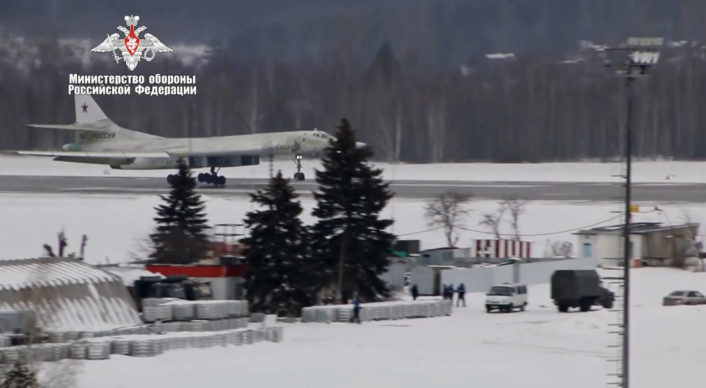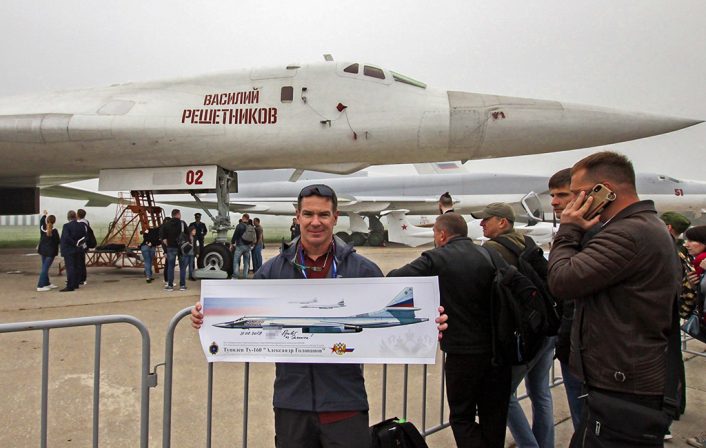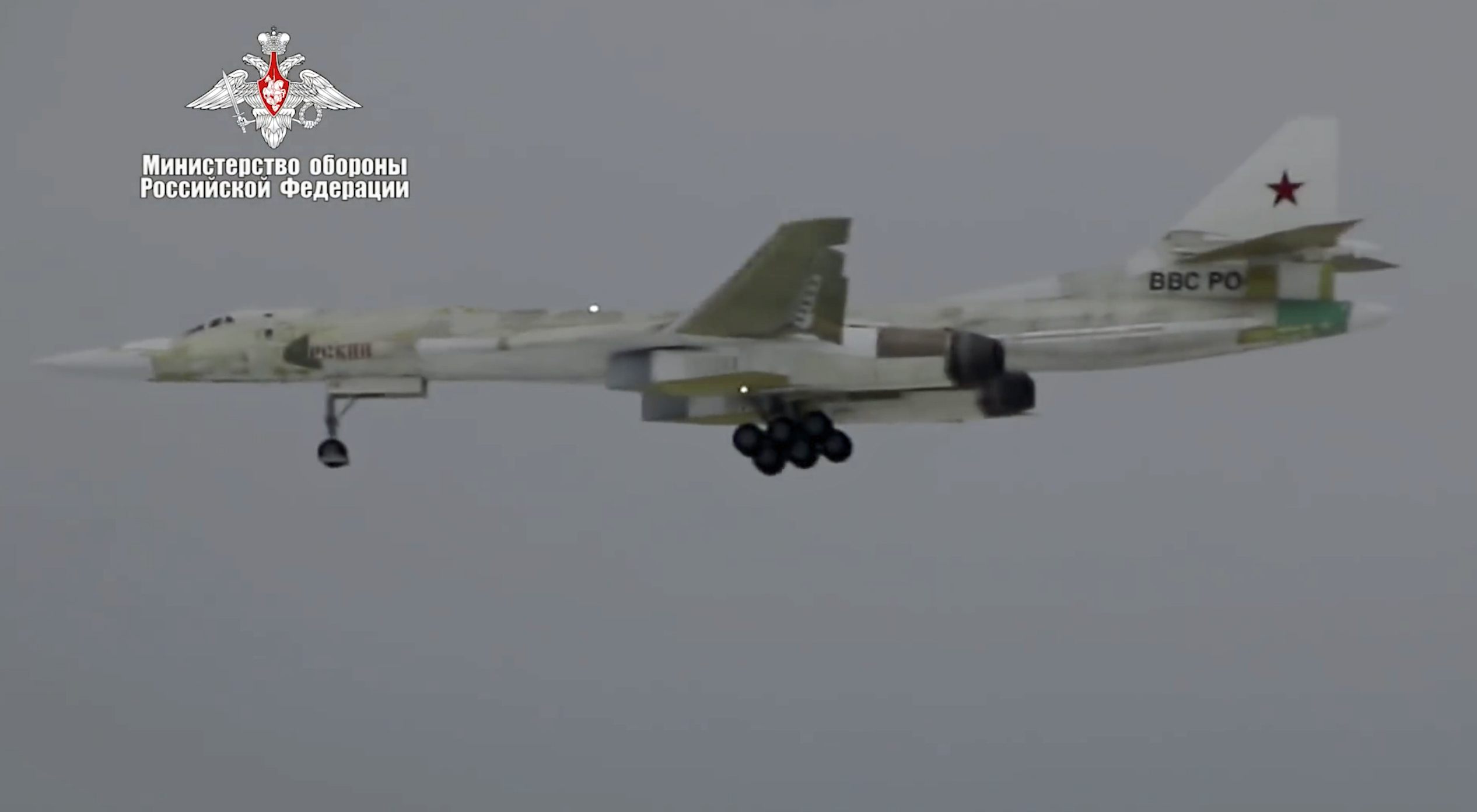World’s Largest, Fastest Bomber Updated with Glass Cockpit, Engines and Avionics Upgrade.
The latest version of the massive Tu-160 “White Swan” supersonic bomber (NATO reporting name “Blackjack”) flew for the first time from Kazan, Russia earlier this month on February 2, 2020. This latest version of the aircraft was updated by United Aircraft Corporation’s “TAPA” or Kazan Aircraft Production Association.
Russia’s Defense Ministry uploaded a new video to its official YouTube channel showing the first flight of the extensively upgraded Tu-160M, named ‘Igor Sikorsky’. Each of the Russian Tu-160 aircraft carry the name of a famous Russian figure in a similar way that the U.S. Air Force has named each of its B-2 Spirit stealth bombers after U.S. states. A report in Russia’s state-sponsored TASS said that the aircraft will retain its original ‘Igor Sikorsky’ name, honoring the great Russian-American aircraft designer known for his influence on helicopter development.
The new Tu-160M version, the largest, fastest operational strategic bomber in the world, includes a glass cockpit, weapons upgrades, new engines and the removal of obsolete equipment no longer relevant to the Tu-160’s mission. The original Tupolev Tu-160 “Blackjack” first flew in 1981 and entered service in 1987. This recent flight, flown earlier this month and just now surfacing in media, was the first flight for an upgraded Tu-160M emerging from the second phase of major updates for the Tu-160 White Swan. The first flight took place on Feb. 2, 2020 and lasted 2 hours and 34 minutes according to Russian sources. The aircraft achieved a maximum altitude of approximately 5,000 feet (1500 meters).
A Russian media outlet reported that, “Russian Deputy Defense Minister Alexei Krivoruchko said in an interview with the newspaper Krasnaya Zvezda in December 2019 that the deliveries of heavily upgraded Tu-160M bombers to the troops were due to begin from 2021.”
According to a report in the authoritative defense reference Janes.com, “The Tu-160M upgrade is being rolled out in two phases, with the first Tu-160M1 phase comprising the new K-042K-1 navigation system and ABSU-200-1 autopilot, as well as the removal of some previous systems, such as bomb sighting systems. This Tu-160M1-variant has been operational with the air force since late 2014. The second Tu-160M2 phase includes the new Novella NV1.70 radar, a digital ‘glass’ cockpit, modern communications and anti-jamming equipment, upgraded NK-32 engines (designated NK-32-02), and modern conventional and nuclear weapons.” It is this second M2-phase update aircraft that flew for the first time earlier this month.

The Tu-160 has been operational in strikes over Syria and has been used in power projection missions to show Russian support of the current Venezuelan government. While the aircraft does not employ low observable technologies similar to the U.S. B-2 Spirit “stealth bomber”, the aircraft’s imposing size, large bomb load, range and speed make it relevant in the strategic bombing role, especially against insurgent targets with few effective high-altitude anti-aircraft systems such as ISIS in Syria.
Russia currently fields approximately 17 of the Tu-160 White Swan bombers belonging to the 121st Guards Heavy Bomber Aviation Regiment stationed at Engels-2 Air Base in Saratov, Oblast, southwestern Russia. This number compares to the approximately 20 low-observable B-2 Spirit strategic bombers fielded by the U.S. Air Force’s 509th Bomb Wing and several active test units.
A more comparable near-peer aircraft to Russia’s Tu-160 in U.S. service is likely the B-1B Lancer. A February 10, 2020 story published on the Air Force Global Strike Command’s official website said that, “Currently a portion of the B-1Bs are in a state that will require tens of millions of dollars per aircraft to get back to the status quo fleet in the short term until the B-21 Raider comes online. As such, Air Force officials proposed the retirement of 17 structurally deficient B-1Bs in 2021 so that maintenance dollars and manpower can be focused on the healthiest aircraft of the fleet.”
The U.S. is relying heavily on substantial numbers of the upcoming B-21 Raider, planning for a purchase of as many as 100+ of the aircraft. Interestingly, China has also revealed plans for what they claim is a new low-observable long range bomber allegedly called the Xian H-20. Some projections say the so-called Xian H-20 may be ready to fly as early as 2025, although little solid evidence of the program’s status has emerged in aerospace media.
The continued upgrades for the Tu-160 White Swan may suggest that any major new heavy bomber program for Russia only exists in an early, conceptual phase. This is in contrast to the U.S. B-21 Raider program, which is nearing a likely public unveiling of a first prototype within the next two years.














